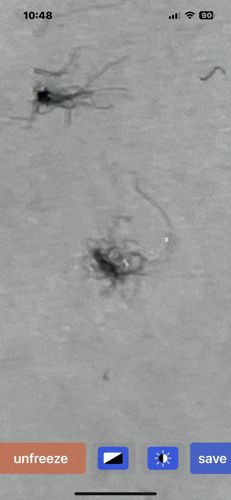Phorid fly (or Humpbacked fly)
Scientific Name: Various species within the Phoridae family (e.g., Megaselia scalaris is a common indoor species).
Order & Family: Order: Diptera, Family: Phoridae
Size: Typically 0.5 to 6 mm in length.

Natural Habitat
Phorid flies are highly adaptable and can be found in a wide range of habitats, particularly those with decaying organic matter and moisture. This includes kitchens, bathrooms, drains, compost piles, garbage disposals, sewage treatment plants, and moist soil. They are often found indoors, attracted to rotting food or plumbing issues.
Diet & Feeding
Phorid flies are scavengers, feeding on a wide variety of decaying organic matter, including decaying plants, fungi, dead insects, carrion, and even human sewage. Some species are parasitic or parasitoid on other arthropods.
Behavior Patterns
Phorid flies are known for their erratic, scuttling behavior, often described as 'scurrying'. They prefer moist environments and are often found near decaying organic matter. They are strong fliers but often observed running or walking. Some species are parasitic, laying eggs on or in other insects or even larger animals.
Risks & Benefits
Potential risks include being a nuisance pest indoors, especially in food preparation areas, as they can potentially transmit bacteria from contaminated sources to food. Certain species can also infest wounds or body cavities (myiasis) in animals and humans, though this is rare. Benefits are minimal to humans, but in ecosystems, they contribute to decomposition processes.
Identified on: 8/27/2025